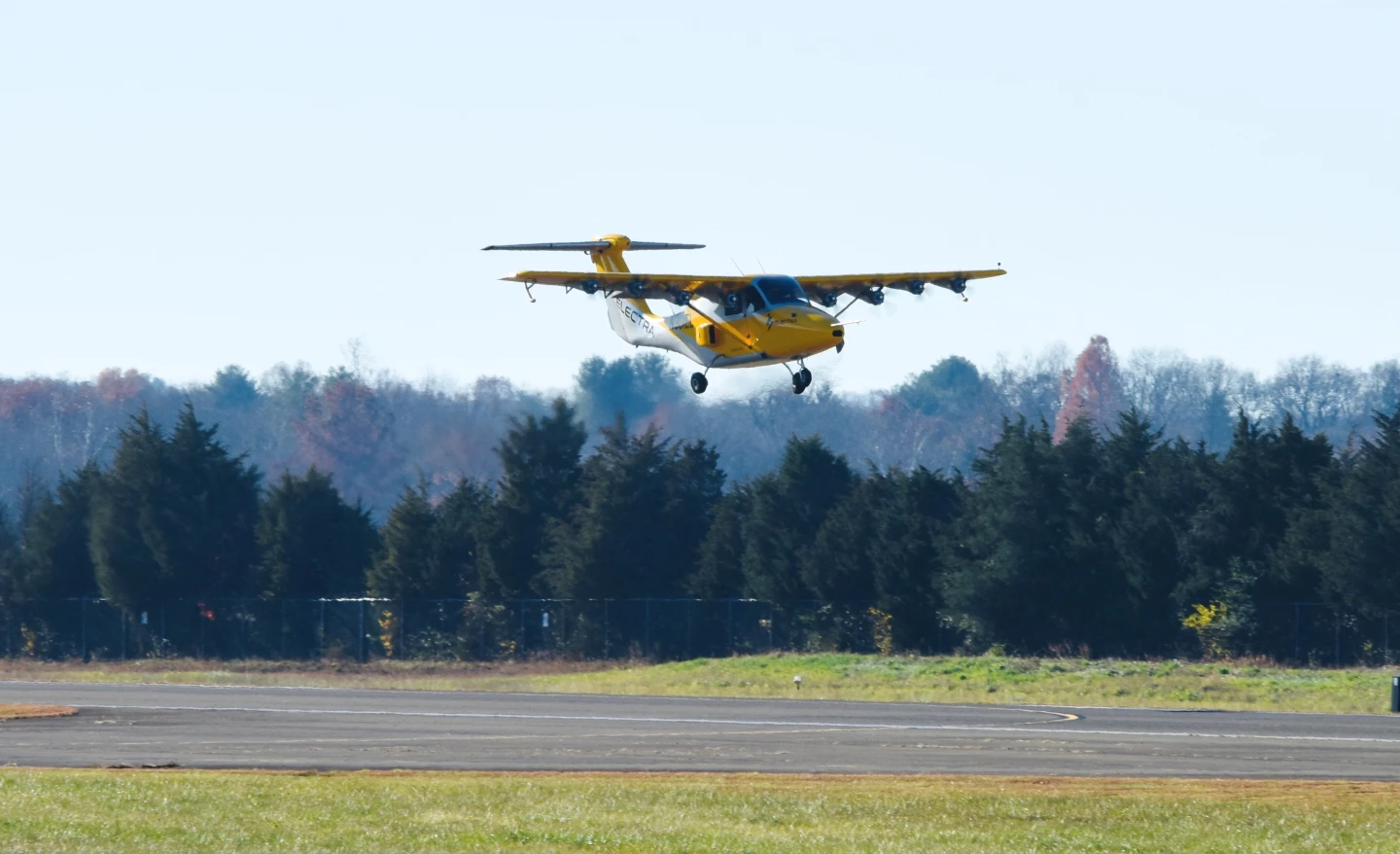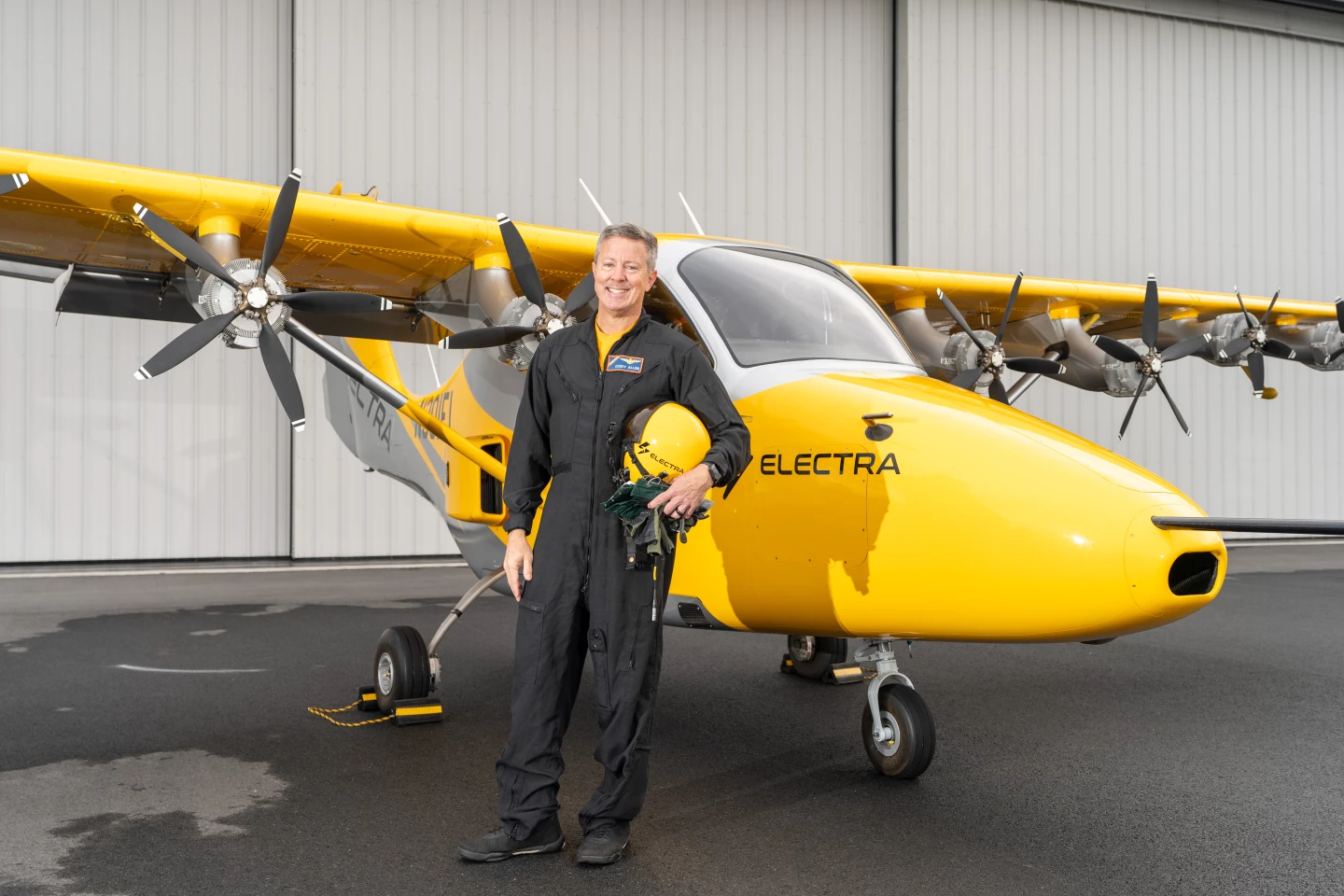Two years ago, American air mobility company Electra announced that it was partnering with the US Air Force on the development of an ultra-short takeoff and landing (ultra-STOL) aircraft. Earlier this month, a demonstrator version of that plane made its first two flights.
Known as the EL-2 Goldfinch, the two-seat "blown lift" demonstrator is actually classified as a hybrid-electric short takeoff and landing (eSTOL) aircraft. It utilizes eight electric propellers (four on each side) to blow air over its wings, greatly increasing lift and thus reducing the length of runways required for take-offs and landings. Such short runways could be located at small urban "pocket airports" in big cities, between which commuter eSTOLs could make short flights.
The propellers' motors are powered by batteries that can either be charged before flight and then used on their own (for pure electric flight), or charged on the go by a small onboard turbogenerator (for hybrid flight). Thanks to this setup, the Goldfinch is reportedly much quieter and produces far less emissions than conventional fixed-wing aircraft or helicopters.

Both of the recent test flights were performed at the Manassas Regional Airport in Virginia, with lead test pilot Cody Allee at the controls.
The first flight, which was all-electric, took place on Nov. 11th, while the second – which was hybrid-electric – took place on Nov. 19th. On the latter flight, which lasted 23 minutes, Allee reached an altitude of 3,200 feet (975 m) and covered a distance of about 30 miles (48 km). For what the company has in mind, it was a step in the right direction.

"The aim of Electra is to fill a gap in air travel between 50 and 500 miles [80 and 805 km], where most trips today are made by automobile," said Electra founder and CEO John Langford. "The key to saving time is to operate close in, which means getting in and out of small spaces quietly and safely, while still being fast enough to cover long distances."
Electra's planned commercial eSTOL (similar to the Air Force model) will seat nine passengers, fly at a speed of 200 mph (322 km/h) for a distance of 500 miles, and be capable of using runways as short as 150 feet (46 m).
Source: Electra








